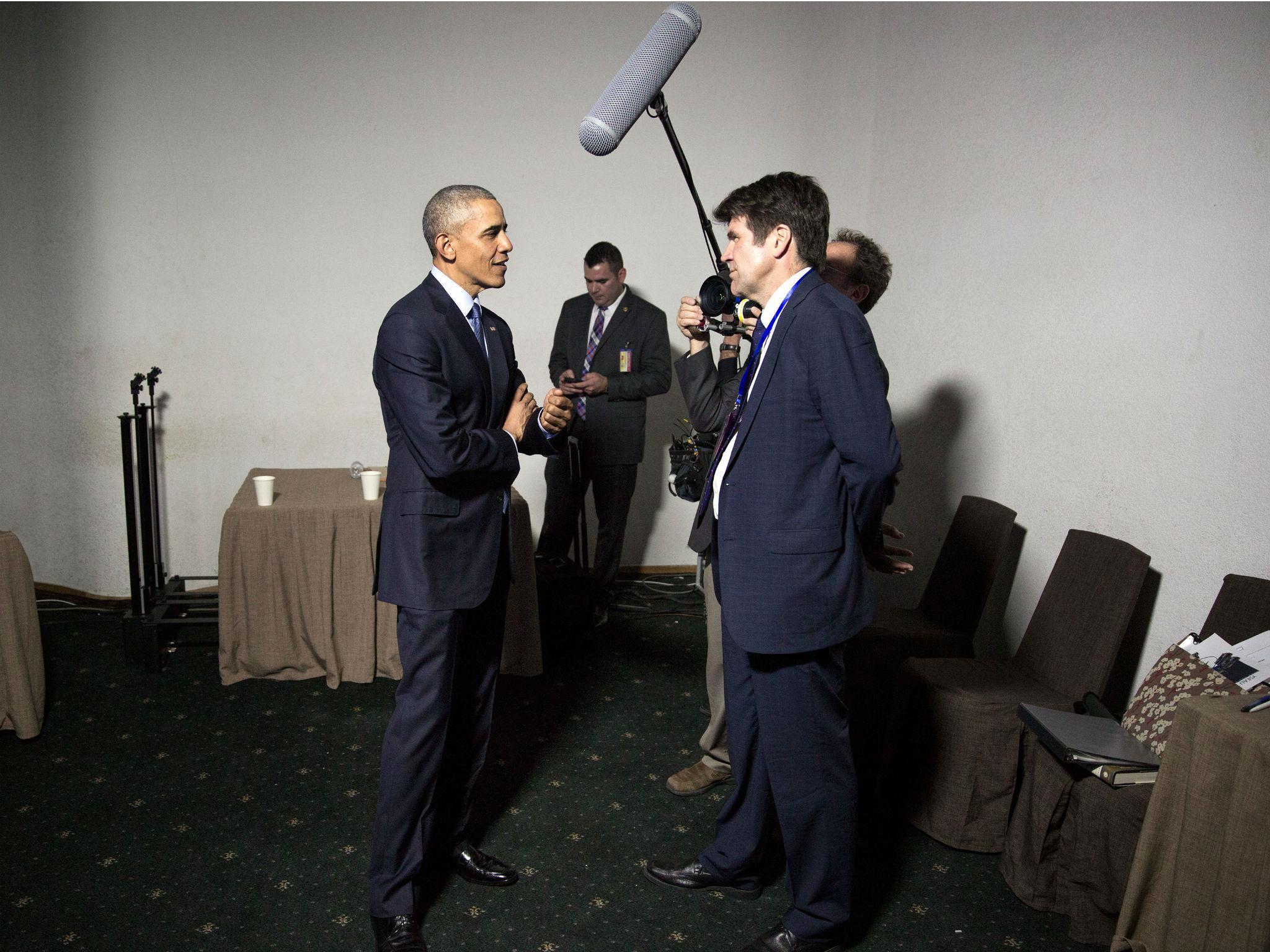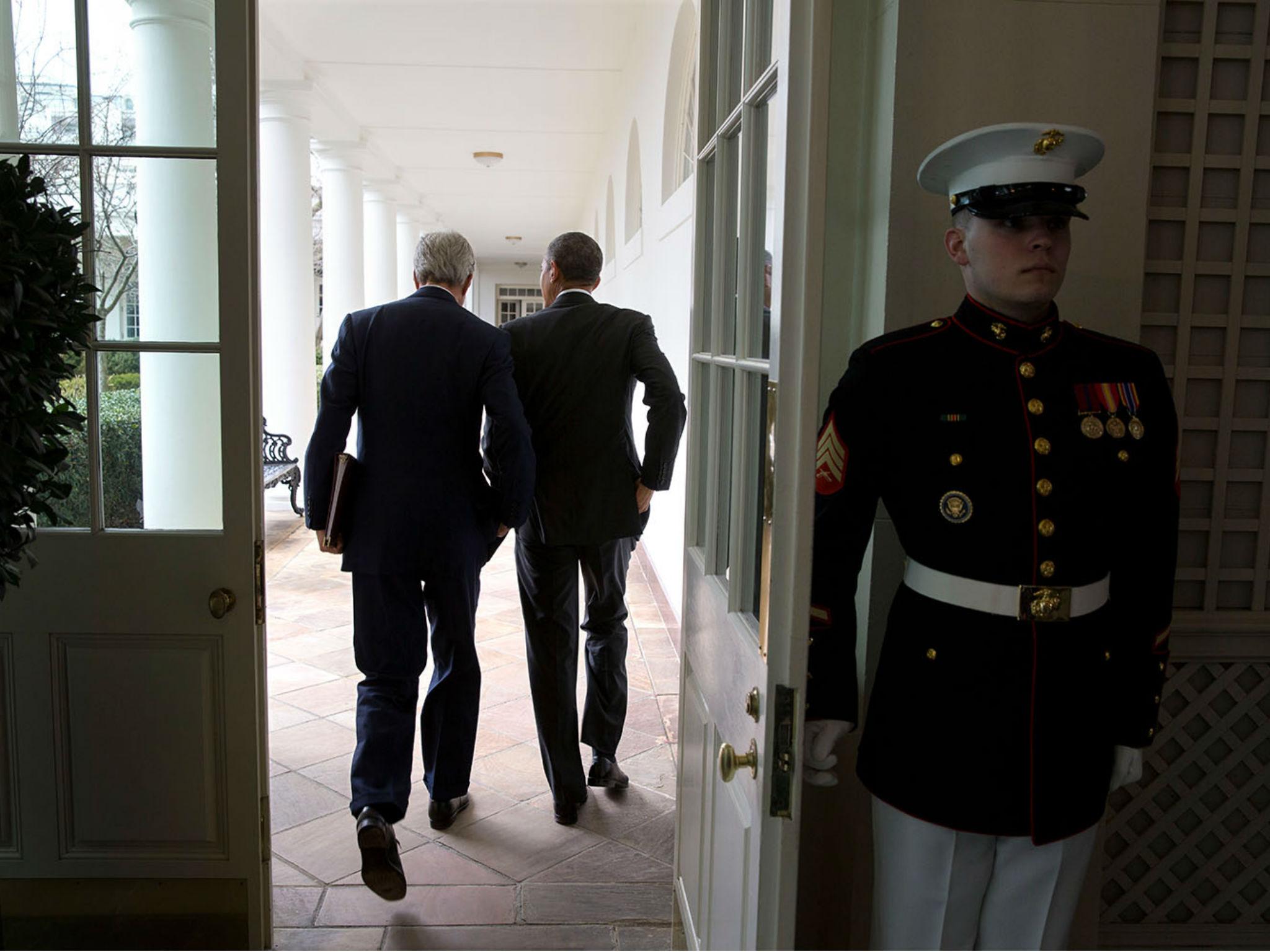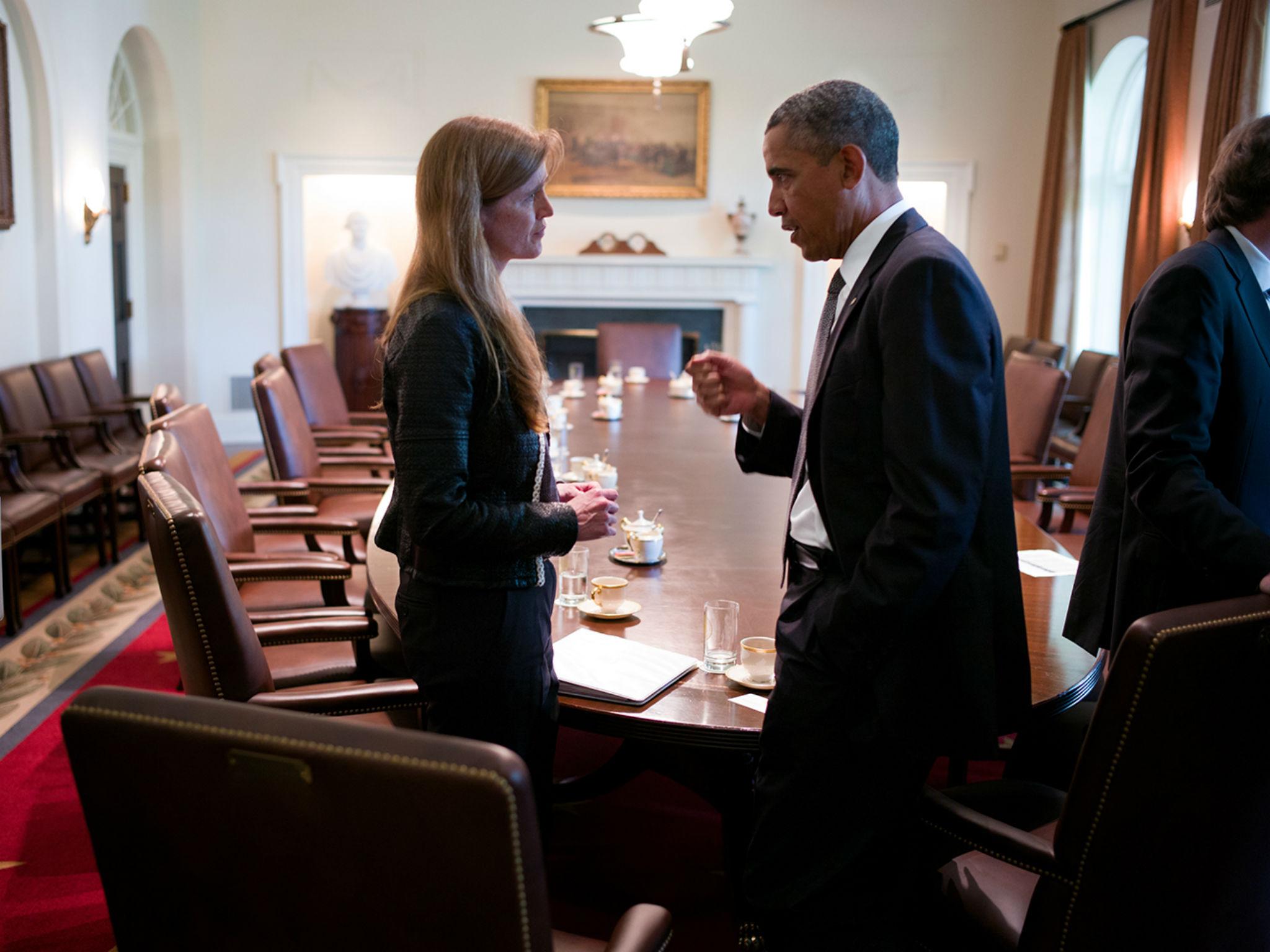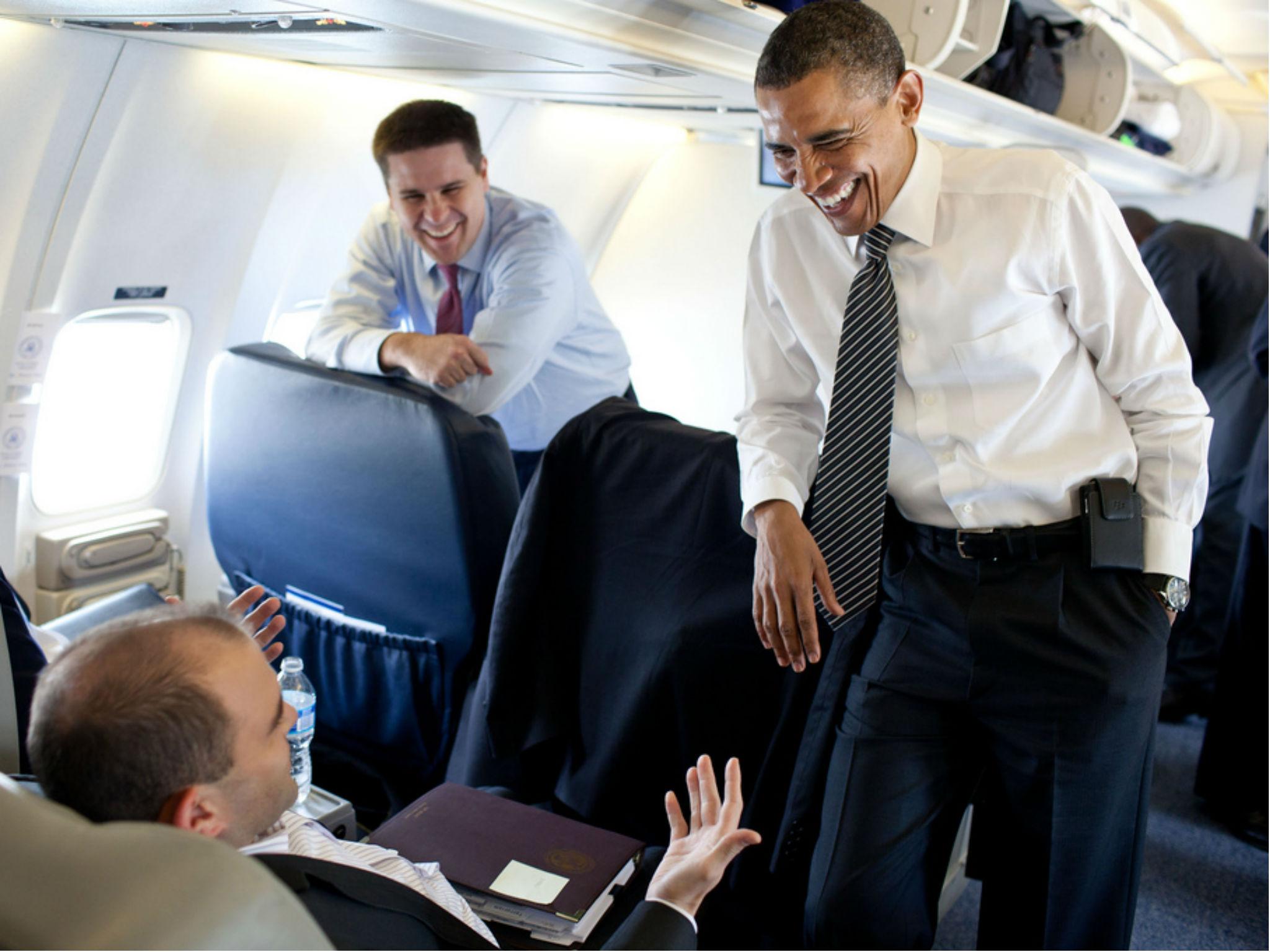The Final Year: Up close and personal at the White House with Obama
Greg Barker’s new film, which follows President Barack Obama’s foreign policy team during their last year in office, offers a very different vision of the US government in action to that of Michael Wolff's book ‘Fire And Fury’, about Donald Trump

What happens when you give a journalist unfettered access behind the scenes at the White House? In the case of author Michael Wolff, whose controversial book Fire And Fury about Donald Trump has just been published, you get chaos, bitter recrimination and lots of angry tweets about Trump’s one-time minion, “Sloppy” Steve Bannon. Greg Barker’s new film, The Final Year, which follows President Barack Obama’s foreign policy team during their last year in office, offers a very different, far more idealistic, vision of the US government in action.
Barker had the same privileged level of access as Wolff. He was able to make the film because of his close links to Samantha Power, US Ambassador to the United Nations during the Obama Administration. Barker had met Power long before she was swept up by Obama and brought into government, when she was still best known as an author and academic. Power featured in his 2004 film, Ghosts of Rwanda, made to mark the 10th anniversary of the Rwandan genocide. Power’s book, Sergio: One Man’s Fight to Save the World, about United Nations diplomat Sergio Vieira de Mello, inspired his 2009 documentary, Sergio. He knew her well and had therefore been very frustrated by profiles of her that started appearing in The New Yorker and elsewhere once she became part of Obama’s team. They were, in his words, “not very good and not revealing of the person I knew. I thought there was more to explore.”
In the summer of 2015, Barker went to see Power and proposed a film. His idea was to chronicle the Obama Administration’s last year in office; their rush to “get things done” and to “define their legacy” before they had to vacate the premises. He knew there was bound to be drama as the clock ticked away on the presidency. His idea was for a fly-on-the-wall documentary along the lines of The War Room, the famous film about Bill Clinton’s election campaign. Power was game. So was Ben Rhdoes, the aspiring novelist who had become Deputy National Security Advisor and who wrote many of Obama’s speeches. The White House bureaucracy was resistant at first but was eventually won round. Barker had his magic ticket to film in the White House and the State Department.

The intention behind The Final Year wasn’t to provide a definitive account of the Obama presidency or to judge its successes and failures. It was simply to offer “an experiential immersion” in a world few of us ever get to see up close. All his subjects from Obama downwards realised he wasn’t trying to “buttonhole them” on the controversy of the moment. They accepted he was discreet and wouldn’t leak their secrets. They were so busy coping with the problems that arose day to day that it was a relief to have someone around trying to take a longer view of their efforts. They also thought that the film, if it was done well, would stand as a record of their work long after all the daily press conferences and policy announcements were forgotten.
“The trick is to be around enough so that when things really start happening, people are comfortable and you get the real authentic emotion,” the director explains of his method.
An insight the film gives us is that the White House is far less expansive than you expect. You can hear the rats beneath the floorboards.
“It [the West Wing] is very small; physically, it is not particularly glamorous once you’re inside; it’s dark. The offices themselves are incredibly cramped. Most of them are windowless and with low ceilings,” Barker lists the shortcomings of one of America’s most famous buildings. He talks of styrofoam ceilings and facilities in urgent need of renovation “I think people get used to it,” he suggests. The cramped conditions make it an intimate working space. The grounds are beautiful and the White House still (as Barker puts it) “exudes power”.

The filmmakers weren’t part of the normal US press corp. Some journalists were resentful of the privileged access they were given. Barker and his crew weren’t in the press room but were in the heart of the West Wing. They didn’t have security clearance but they were still able to shoot in places where cameras were not normally allowed.
For the documentary, Barker filmed the President and his team on over 20 foreign trips. The director estimates he shot around 1,000 hours (12 terabytes) of material. The final cut is just just under one and a half hours. He knew from the start just how his film would end, with the protagonists packing up their offices and leaving the White House for the very last time. “I never wanted to include interviews afterward because people just talk differently when they’re out of those jobs. Even if they’ve only been out of this jobs 24 hours, there is a very discrete moment when you suddenly are not in power any more.”

Watch Apple TV+ free for 7 day
New subscribers only. £8.99/mo. after free trial. Plan auto-renews until cancelled.
ADVERTISEMENT. If you sign up to this service we will earn commission. This revenue helps to fund journalism across The Independent.

Watch Apple TV+ free for 7 day
New subscribers only. £8.99/mo. after free trial. Plan auto-renews until cancelled.
ADVERTISEMENT. If you sign up to this service we will earn commission. This revenue helps to fund journalism across The Independent.
You can’t help but admire the sheer energy of Secretary of State John Kerry in his frantic attempts to negotiate a peace settlement for Syria. (“He put on more miles than any secretary of state in history,” Barker notes.) Ben Rhodes, Susan Rice and Samantha Power are similarly hard working and resourceful even if they sometimes appear naive and blindsided when confronted by the realpolitik of the Russians.

There is a very poignant scene late on in which we see Power hosting an election night event for prominent women, including former UN Ambassador Madeleine Albright and feminist writer Gloria Steinem. We can sense the optimism at the start of the evening give way to creeping anxiety and then full-blown despair as it becomes apparent that Donald Trump will be the next president of the United States.
Most of the subjects have now seen the film. One observation they all make is how tired they look. The film doesn’t always show them in their best light. They don’t manage to achieve lasting peace in Syria and they all somehow manage to miss the rise and rise of Trump. Power is pictured looking startled and dismayed when Obama gives a final speech to the United Nations in which he declares that the world is “by many measures less violent and more prosperous than ever before”. After spending years dealing with the after-effects of one humanitarian disaster after another, that is not how she sees it.
The documentary captures seemingly banal but very revealing and human moments. For example, we see Rhodes struggling with his backpack and Power when she can’t find the words she is looking for. “I know there are moments in this film they would all prefer were not there,” Barker says. “I was not setting out to make them look good. If you like President Obama and his team, you’re going to find a lot of stuff in there to validate your perceptions of him.” If you don’t like them, he points out, there is ammunition in there for you too.
Barely a year after Obama left office, the film already seems a period piece. Watching it, many viewers will feel a sense of yearning and nostalgia as they remember a period (all of 13 months ago) when the White House was functioning in a competent and principled way.
Whatever else, The Final Year offers a unique insight into the closing stages of the Obama presidency. “I would love it if people are still watching the film in 20 or 30 years. Obama’s presidency, whatever you think of it, was a historic presidency and, as it happens, we were the only people in there for this amount of time to capture what the administration felt like, what was inspiring, what was frustrating, the ups and downs,” Barker reflects. “There will be memoirs coming out which will be fascinating to read but in terms of films, there isn’t another one like this about to come out.”
The Obama presidency is bound to be written about and discussed for decades. It’s a fair bet that The Final Year will turn into a key source for historians and journalists trying to understand the workings of pre-Trump America.
“In this particular moment, we are all looking for a way to make sense of what is going on. As it happens, this story of the recent past, which now seems like 10,000 years ago but was just 12 months ago, is painting a picture of an alternative reality. That [reality] was true a year ago and it could still be true again,” Barker speaks wistfully of the Obama era he chronicled and which already seems like a lost golden age.
‘The Final Year’ is released in cinemas and on iTunes on 19 January
Join our commenting forum
Join thought-provoking conversations, follow other Independent readers and see their replies
Comments